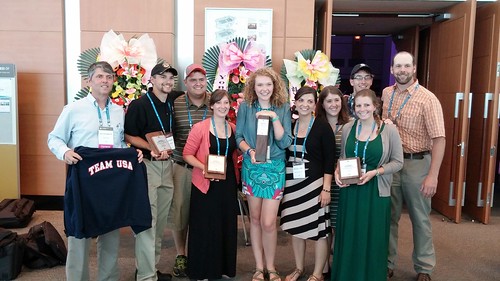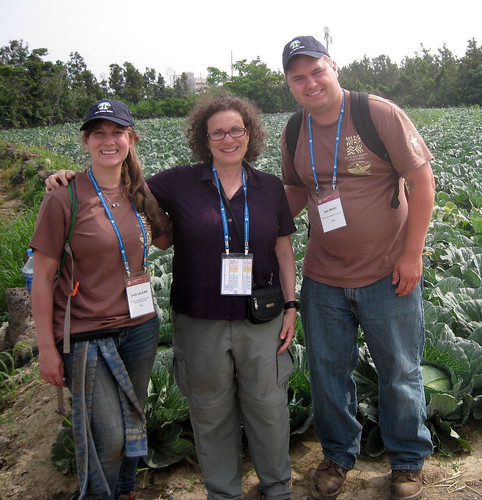
While many tuned in to watch the World Cup to see which team would become the globe’s soccer champs, others watched a competition of a different kind: one that named the earth’s best identifiers of slices of earth.
College students from the United States competed with teams from nine other countries to see who could best interpret soil. America took first and second in the inaugural International Soil Judging Contest. And American contest Tyler Witkowski also won second place overall of 45 contestants.
“Soil and land judging at the high school and college level is a baseline entry for young people to study the land and learn to read the landscape so that they can better manage and protect it,” said Maxine Levin, with the National Soil Survey Center of USDA’s Natural Resources Conservation Service. NRCS is the United States’ premier private lands conservation agency, originally founded to conserve and map the nation’s soils. Levin helped prepare the contest and served as a judge.
The Soil Science Society of America, Agronomic Science Foundation, and students’ universities sponsored the trip.
Thirteen teams from ten countries, representing five continents, converged on the island of Jeju to interpret Korea’s volcanic soils. The competing teams were composed of four students and a coach.
The two U.S. teams included students that earned the highest scores this April at the National Collegiate Soils Contest in Doylestown, Pa. The contest hosted teams from the United States, Japan, China, Korea, South Africa, Australia, Taiwan, Mexico, Hungary and United Kingdom.
Collegiate soil judging contests in the United States date back more than 54 years and involve the description, classification and interpretation of soil. The events help students recognize important soil and landscape properties and consider these characteristics when deciding how to use soils appropriately with conservation in mind.
“The students interpreted the soil and land conservation for what the people on Jeju Island are most economically interested in – tangerines, carrots, golf courses and septic tank suitability,” Levin said. On the day of the contest, the students explored two soil pits in garlic fields and then traveled to a mountain where they investigated andisols, or volcanic ash soils.
The winning team, USA-B, was coached by Chris Baxter, professor of soil and crop science at the University of Wisconsin, Platteville.
“The competition was exceptionally well-organized and provided an outstanding learning experience for the students,” Baxter said. “Our Korean hosts and contest organizers worked very hard to select sites that were representative of soils that are of economic and environmental importance to Jeju Island and provided the coaches all the necessary information we needed to instruct our students.”
The team claiming second place overall was led by Dr. John Galbraith, associate professor of soil and wetland sciences at Virginia Tech.
He said one of the highlights of the contest was that the students “learned how to be professional, to represent their country, to meet peers from other countries, to learn about diverse cultures, and they were afforded the chance to explore soils and geology much different than any they had seen before.”
The U.S. win in Korea transpires just in time for what promises to be a grand occasion for soil and soil science. The 68th United Nations General Assembly recently declared 2015 as the International Year of Soils.
Part of the goal of this competition is to encourage students to pursue careers in natural resource conservation, including those at NRCS.
“This was one of the best experiences of my entire career, and I am hopeful that our U.S. student competitors will remember it as a touchstone that they can make a difference, seeing the world globally through soil science,” Levin said.
Future conservationists are what NRCS is rooting for!

